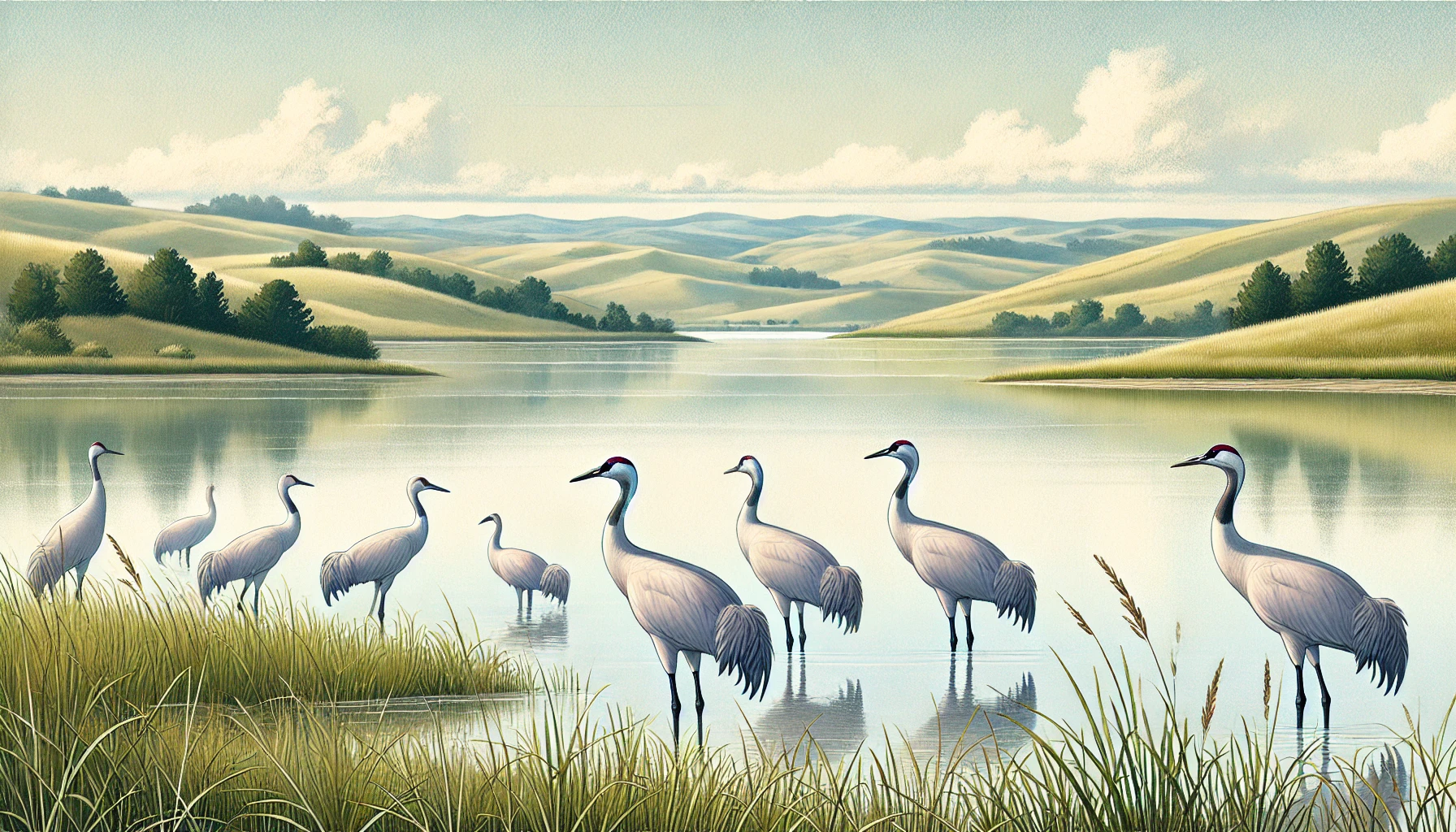Great Plains Hydrology in Nebraska

Traveling through the Great Plains of Nebraska, one cannot help but notice the vast expanses of rolling hills, prairies, and rivers that shape the region's hydrological landscape. Hydrology in this region is characterized by a complex interplay of precipitation, evaporation, and groundwater flow that supports a rich diversity of ecosystems and wildlife. As we delve into the specifics of Great Plains hydrology in Nebraska, it becomes apparent that this region's unique hydrological characteristics are intricately linked with the larger regional climate and geological context.
At its core, the hydrology of the Great Plains is driven by a combination of precipitation and groundwater recharge. Average annual rainfall in eastern Nebraska, for example, is approximately 30 inches, with a gradual decrease to around 15 inches in the western part of the state. Much of this rainfall is absorbed into the ground and feeds a vast network of aquifers, including the Ogallala Aquifer, which underlies much of the Great Plains region. The Ogallala, also known as the High Plains Aquifer, is one of the largest aquifers in the world and spans eight states, including Nebraska, providing critical water resources for agriculture and drinking water.
A key feature of Great Plains hydrology is its reliance on wetlands and shallow lakes to regulate flow and maintain water quality. For example, the Platte River, which flows through central Nebraska, relies on shallow lakes and wetlands to help mitigate flood events and maintain a stable water table. A specific example of this is the Platte River Basin's Rainwater Basin, a network of shallow lakes and wetlands located in south-central Nebraska, near the town of Kearney. This region serves as a crucial recharge area for the Ogallala Aquifer and also supports a rich variety of wildlife, including migratory bird species such as the sandhill crane.
Another important aspect of Great Plains hydrology is the impact of agriculture on regional water resources. With around 90% of Nebraska's land dedicated to agricultural use, the potential for groundwater contamination and surface water degradation is substantial. The widespread application of fertilizers, pesticides, and irrigation systems has increased the risk of nutrient leaching and chemical runoff into surface waters. For example, high levels of nitrates have been detected in the Platte River Basin, largely attributed to fertilizer application and poor irrigation management.
In recent years, efforts to improve water management in the Great Plains have gained momentum. Large-scale conservation projects, such as the US Fish and Wildlife Service's Wetland Restoration Program, aim to restore degraded wetlands and shallow lakes across the region. These projects often involve collaboration with landowners and local communities to implement best management practices, such as sustainable irrigation and integrated pest management. For instance, the University of Nebraska-Lincoln's Institute of Agriculture and Natural Resources has established a program to work with irrigators to optimize water application and improve crop yields, while also reducing the environmental impacts of irrigation.
Additionally, Nebraska state agencies have implemented policies to manage groundwater use and protect surface water quality. For example, the state's Ground Water Quality and Use Committee works to establish regulations on groundwater irrigation permits, limit groundwater extractions in areas of high concern, and promote education and outreach on groundwater conservation. The Nebraska Department of Environment and Energy has also established a state-wide strategy to reduce nutrient pollution and protect surface water quality, including efforts to implement conservation practices such as cover cropping and crop rotation.
Despite these efforts, Great Plains hydrology in Nebraska still faces many challenges. Continued drought events, combined with the region's increasing agricultural demands and development pressures, pose ongoing risks to regional water resources. To address these challenges, continued research and innovation in water management practices will be crucial. Furthermore, continued education and outreach on water conservation and sustainable land management practices will be necessary to ensure that the unique hydrological characteristics of the Great Plains are preserved for future generations.
As one travels through Nebraska, the complexities and challenges of managing the state's water resources become increasingly apparent. Understanding the intricacies of Great Plains hydrology is critical to developing effective water management strategies that promote sustainable land use, support a diverse range of ecosystems and wildlife, and prioritize human well-being.
At its core, the hydrology of the Great Plains is driven by a combination of precipitation and groundwater recharge. Average annual rainfall in eastern Nebraska, for example, is approximately 30 inches, with a gradual decrease to around 15 inches in the western part of the state. Much of this rainfall is absorbed into the ground and feeds a vast network of aquifers, including the Ogallala Aquifer, which underlies much of the Great Plains region. The Ogallala, also known as the High Plains Aquifer, is one of the largest aquifers in the world and spans eight states, including Nebraska, providing critical water resources for agriculture and drinking water.
A key feature of Great Plains hydrology is its reliance on wetlands and shallow lakes to regulate flow and maintain water quality. For example, the Platte River, which flows through central Nebraska, relies on shallow lakes and wetlands to help mitigate flood events and maintain a stable water table. A specific example of this is the Platte River Basin's Rainwater Basin, a network of shallow lakes and wetlands located in south-central Nebraska, near the town of Kearney. This region serves as a crucial recharge area for the Ogallala Aquifer and also supports a rich variety of wildlife, including migratory bird species such as the sandhill crane.
Another important aspect of Great Plains hydrology is the impact of agriculture on regional water resources. With around 90% of Nebraska's land dedicated to agricultural use, the potential for groundwater contamination and surface water degradation is substantial. The widespread application of fertilizers, pesticides, and irrigation systems has increased the risk of nutrient leaching and chemical runoff into surface waters. For example, high levels of nitrates have been detected in the Platte River Basin, largely attributed to fertilizer application and poor irrigation management.
In recent years, efforts to improve water management in the Great Plains have gained momentum. Large-scale conservation projects, such as the US Fish and Wildlife Service's Wetland Restoration Program, aim to restore degraded wetlands and shallow lakes across the region. These projects often involve collaboration with landowners and local communities to implement best management practices, such as sustainable irrigation and integrated pest management. For instance, the University of Nebraska-Lincoln's Institute of Agriculture and Natural Resources has established a program to work with irrigators to optimize water application and improve crop yields, while also reducing the environmental impacts of irrigation.
Additionally, Nebraska state agencies have implemented policies to manage groundwater use and protect surface water quality. For example, the state's Ground Water Quality and Use Committee works to establish regulations on groundwater irrigation permits, limit groundwater extractions in areas of high concern, and promote education and outreach on groundwater conservation. The Nebraska Department of Environment and Energy has also established a state-wide strategy to reduce nutrient pollution and protect surface water quality, including efforts to implement conservation practices such as cover cropping and crop rotation.
Despite these efforts, Great Plains hydrology in Nebraska still faces many challenges. Continued drought events, combined with the region's increasing agricultural demands and development pressures, pose ongoing risks to regional water resources. To address these challenges, continued research and innovation in water management practices will be crucial. Furthermore, continued education and outreach on water conservation and sustainable land management practices will be necessary to ensure that the unique hydrological characteristics of the Great Plains are preserved for future generations.
As one travels through Nebraska, the complexities and challenges of managing the state's water resources become increasingly apparent. Understanding the intricacies of Great Plains hydrology is critical to developing effective water management strategies that promote sustainable land use, support a diverse range of ecosystems and wildlife, and prioritize human well-being.
